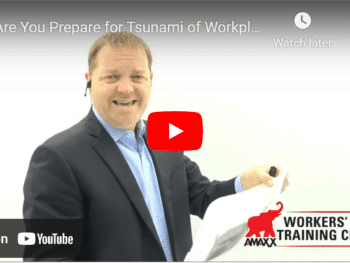
Common Cultural Barriers to An Effective Work Comp Program
The great American melting pot continues to change. This includes immigration from different parts of the world with people who seek their pursuit of happiness and a better life in the United States. These changes impact workers’ compensation programs based on barriers that need to be broken down. Common barriers include:
- Mistrust of the government, including courts and government officials. Workers’ compensation programs involve a component of government involvement, including industrial commissions and judges. A mistrust of these officials can impact how immigrants perceive justice.
- Perceptions within one’s community by ethnic groups following a work injury. Even in instances where an injury is temporary, there is an underlying stigma attached in some communities that transcends the confines of the law and a workers’ compensation act. Lack of self-worth following an injury trickles down to prolonged medical care and receipt of indemnity benefits.
- Inherent risk of injury to new immigrant populations. Countless studies demonstrate non-white and/or non-English speaking populations suffer work injuries at a greater frequency than Caucasian and/or English speaking populations. Like immigrants from Europe in the late 1800s and early 1900s, today’s immigrants tend to have fewer transferable job skills as whole and gravitate toward positions resulting in a higher frequency of injury.
Click Link to Access Free PDF Download
“The 5Cs to Taking a Bulletproof Injured Worker Recorded Statement”
Proactive Approaches to a Changing Workforce
Members of the claims management team and their employer counterparts can take a hands-on approach to managing their risks when it comes to workers’ compensation matters. Here are some practical and easy to implement strategies, which will increase safety, reduce program costs and improve employee morale.
- Thinking beyond English and Spanish. The American workforce continues to change and evolve. With each passing year, more languages are spoken in the workplace. Never assume that the region of your business limits the possible number of languages spoken. Assumptions should also never be made that all members of the workforce can read signs. Providing verbal and written safety instructions are key. Use a competent translator if in doubt.
- Develop a cultural competency within the workplace. People from around the world develop customs and beliefs based on their world view. What may seem odd to some, is the norm to others. Look for opportunities to bridge the gap and develop trust by your actions.
The Irrelevancy of Immigration Status
A review of various workers’ compensation laws point to the conclusion that one’s immigration status has little relevancy when it comes to questions on compensability of a workplace injury. In a majority of situations, courts have held one’s immigration status does not impact the ability to receive indemnity and medical benefits following a workers’ compensation injury.
Stakeholders should be proactive and follow all state and federal employment laws in their hiring practices. Following this rule can avoid issues down the road when it comes to return-to-work, job search and making a job offer post injury.
Conclusions
Interested stakeholders in workers’ compensation programs are faced with many challenges. Among these include the need to accommodate a diverse workforce. Central to this matter should be tenants that drive any program—treat all employees with respect and dignity. Going the extra mile to ensure all employees are safe in the workplace takes little effort and can only improve the cost-effectiveness of a program.

Contact: mstack@reduceyourworkerscomp.com.
Workers’ Comp Roundup Blog: https://blog.reduceyourworkerscomp.com/
©2017 Amaxx LLC. All rights reserved under International Copyright Law.
Do not use this information without independent verification. All state laws vary. You should consult with your insurance broker, attorney, or qualified professional.










